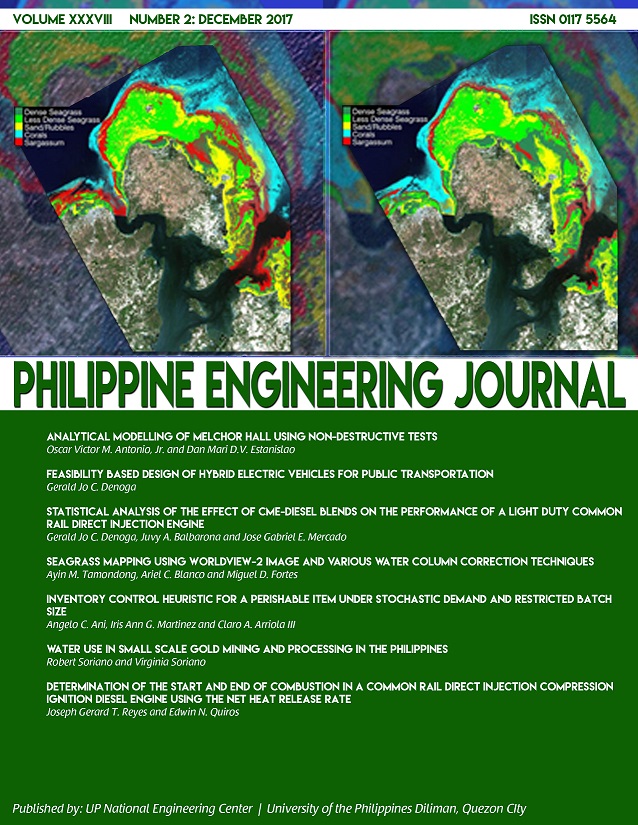Process Water Use and Water Quality in Selected Small Scale Gold Processing Sites in the Philippines
Abstract
Small-scale gold production contributes significantly to the total value of gold mined in the country. While the economic benefits from small scale gold production are promising, certain concerns such as water management and heavy metal pollution have been raised. This study provides actual documentation at nine observation sites across the Philippines to quantify the use of process water and the changes in water quality indicators in small-scale gold production. The results show a wide variability in the amount of water use due to the choice of method employed in the recovery of gold. Process water was measured to range from 1,424 to 38,512 liters per ton of ore with a mean of 17,723 liters per ton of ore. On the average, the process water usage associated with sluicing, milling, cyanidation, and panning accounted for 79%, 16%, 4% and 1% of the total process water, respectively. The laboratory analysis of the process water also showed that heavy metal content for arsenic, cadmium, mercury and lead above the effluent standards for gold ore mining were detected in some stages during the gold extraction process. The results can be used to identify potential stages in improving the efficiency of water use in the gold extraction stage for small scale facilities and in adopting water saving alternatives. Furthermore, the results can be useful for identifying the potential impacts and proper management of the effluents from the processes. Recommendations to improve management of water resource and water quality are discussed and presented.
Keywords— Sustainability, Small scale gold production, Water use, Water quality


